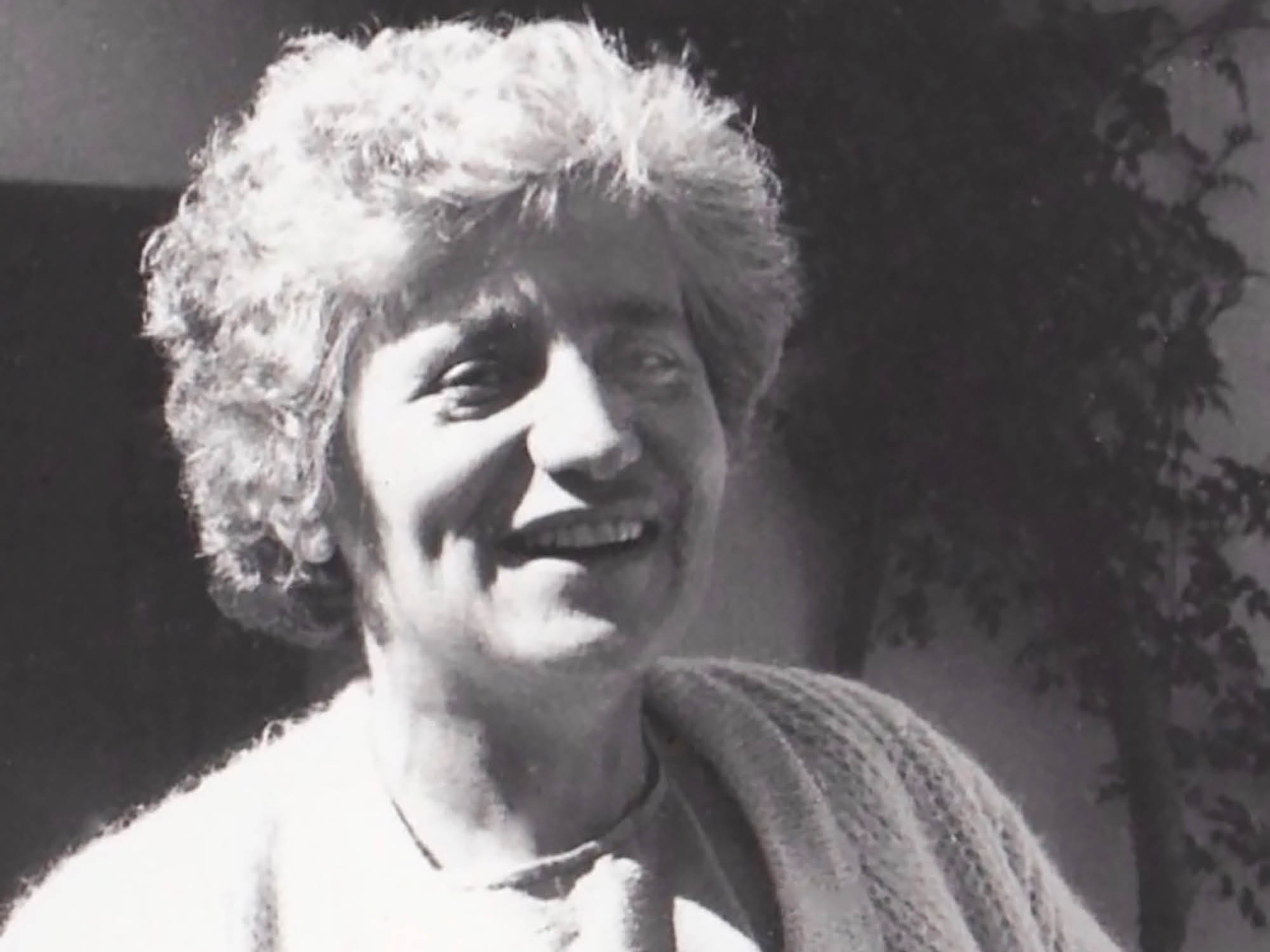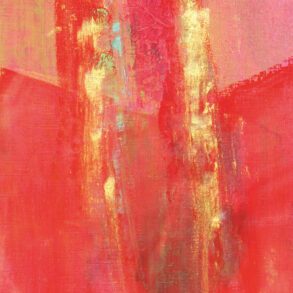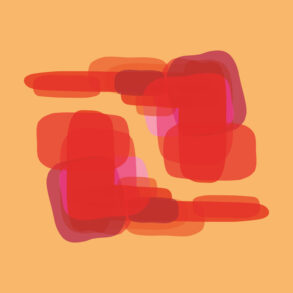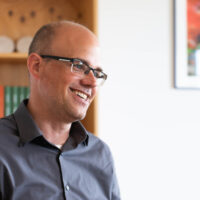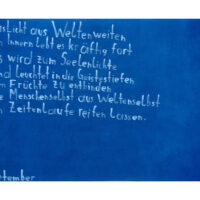Truus Geraets (1930–2023) was a pioneering spirit and a bon vivant. Why did she choose to dedicate most of her life to the mostly thankless, poorly paid, and potentially hazardous field of social work?
Geertruida Wilhelmina Geraets, whom we all knew simply as Truus, campaigned for the disenfranchised. She was a pioneer of social work, which differs significantly from social education, special education, or social science–the disciplines usually associated with anthroposophy and higher education. Social work deals directly with people who live in prisons and ghettos or who are marginalized by poverty, racial or religious prejudice, and neglect, especially in childhood. Problems such as alcoholism, drug abuse, family and sexual violence, and crime are common. Many of these people fall victim to the criminal justice system or live in conditions where the individual is unable to assert the human rights that they are entitled to and which we often take for granted–the right to police protection and legal representation, education, freedom of movement, paid work, etc. Those involved in social work earn little money or social recognition and sometimes expose themselves to considerable danger.
When I started working with Truus at Baobab Community College in Alexandra Township, Johannesburg, I had no conception of social work. That was in 1991, and Truus was just over 60 years old. She lived with her friend Claartje Wijnbergh in a house on Baobab Street, Johannesburg North, from which the college takes its name. I never really got to know Truus, although we had a lot to do with each other. It was difficult to get to know Truus anyway. First of all, she never talked about herself. If you asked her a personal question, she answered honestly and openly, but she never took very long because she was always busy working.
When I visited them and got talking to Claartje, Truus excused herself after a few minutes and was off to do something productive. While Claartje and I had one job each, Truus had about five. She was a therapeutic eurythmist at the Michael Mount and Inkanyesi schools and the local anthroposophical doctor’s clinic. She taught eurythmy to all the children at the Inkanyesi school. She also ran the Centre for the Art of Living, the umbrella organization of Inkanyesi, Baobab, and several other initiatives. She ran a project at the Inkanyesi school to make rag dolls for children, which she marketed all over the world, and she was busy writing her first two books about our work in South Africa. She was the fundraiser for the whole organisation and had extensive contacts in Europe and the United States for this purpose. She also worked as a pharmaceutical assistant at the local Weleda company whenever she needed some extra money, which is how she financed her social work. Each of these activities conformed to her idea of social engagement.
Truus did not follow conventions. She was a law unto herself, which did not always make her an easy colleague. She never argued about anything—in fact, I never saw her get angry or express her anger in any way. She simply disagreed and carried on doing what she wanted. Things like convention, status, personal ambition, and recognition meant nothing to her. She lived hand to mouth, never accumulated savings or paid into a pension fund, and worked full-time until she was almost 90.
In 2016, I visited my old, much loved colleague and friend Claartje Wijnbergh at her house in Driebergen (Netherlands) and was surprised to find Truus there too, on a visit from the US. I took the opportunity to interview her, and she told me the following:
“I was born in Holland in 1930, the youngest of four children. My father had more or less left my mother before I was born. He wanted to become a priest in the Christian Community, but they said: if you can’t feed your family, you mustn’t come to us. My mother was able to rent a very cheap apartment while she worked for a doctor in The Hague. Then, we moved to Zwolle, in the middle of the country, where we rented a coach house for very little money. However, it proved rather lonely for my mother. My grandmother wanted us to be closer to where she lived near Arnhem, so we moved into a row of semi-detached houses—my mother with four children and no money. My grandmother was eventually forced to pay her 90 guilders a month because there were no social services yet. My mother had to keep a precise record of every cent she spent.
My anthroposophical mother was a crucial figure in my life. We had a very peaceful home, and the four of us daughters never fought, even though growing up without a father made it a bit difficult to be accepted in the world. It is easier in anthroposophical circles, but in the wider world, it is quite tricky. The father is often the one to make that connection. I never went to a Waldorf school because my mother couldn’t afford it. Many years later, I discovered that there was such a thing as star children. I think I was one of them–someone who always knew everything. That was also the reason why I skipped a grade. I found it all so boring, and I was only eleven when I started high school.
Then came the war, and I, of course, lost a year. Instead, I had the wonderful opportunity of spending a year on a farm surrounded only by animals. It was the best thing that could have happened to me. Unfortunately, it was not nearly as nice for my mother and my siblings. I was about 14 at the time, and we had all been evacuated. I helped on the farm, which was much more fun than working around the house. My older brother had been drafted by the Germans for forced labor in the armaments factories. It was hard work. Many young men went underground, but because my mother was quite alone, she had to do as she was told. When we finally returned to our house, it was still standing, but all the windows were broken, and the plants were growing into the house.
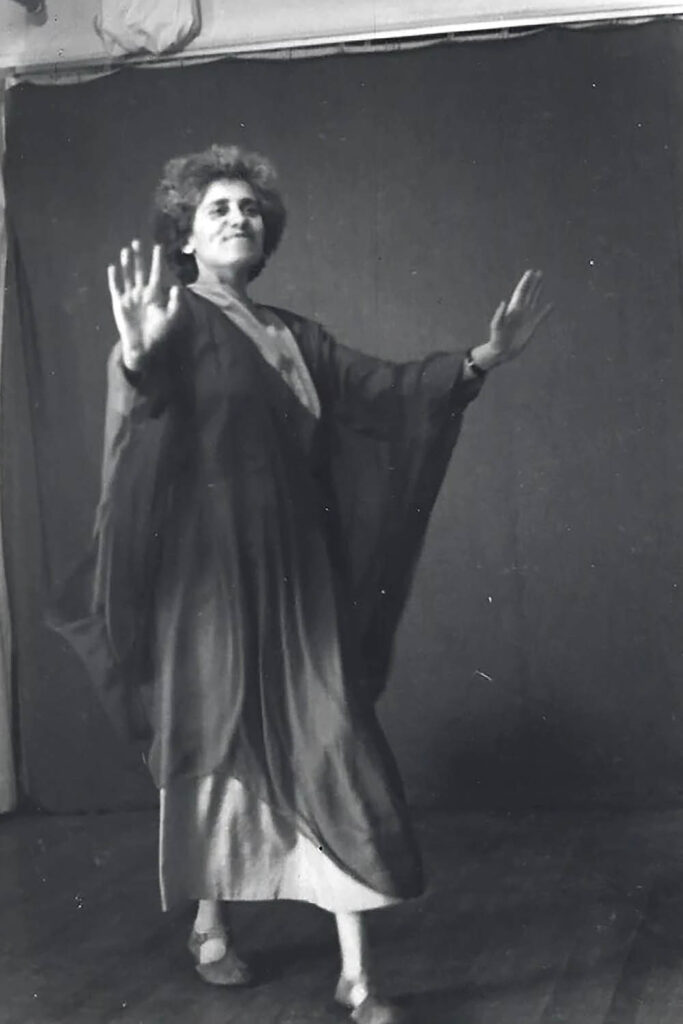
Finding the Way
For many years, I did not know what to do with my life. I asked my mother, but all she said was that I had to find out for myself. So, I started training as a pharmaceutical technical assistant, which at least had something to do with healing, but I had some bad experiences with it. During that time, my brother opened a home for handicapped children,1 and I thought maybe I should work there for half a year. I soon realized that I did not know enough to work there, so I went to Eckwälden in Germany to start the first year of training in special education. There were 15 students and 15 teachers, many of whom had known Rudolf Steiner personally. Before I left, I had worked for my brother for half a year and had gotten to know his children’s home. While I was away, they made a connection to Camphill, although I knew right away that this could never be my way. Then Karl König visited my brother and his wife to ask them if they would move to South Africa. Their institution had a number of homes where severely handicapped children lived, and they considered giving them over to non-anthroposophical institutions in order to move. So, I decided to take over the children’s home when they went to South Africa, not under the auspices of Camphill, but as a general anthroposophical home.
After Eckwälden, I went to Dornach because Lea van der Pals’ eurythmy school was starting in April. I always said I would only do one year; that would be enough. But back then, they only did artistic eurythmy, not therapeutic eurythmy or anything like that. So I always went to Mrs. de Jaager, who lived in the house next to the Goetheanum. I learned the most from her, and she was Dutch, which is always refreshing for me. She had led the very first eurythmy school in Dornach for 16 years. I don’t know if it was classical therapeutic eurythmy, but she had methods that you could use to treat pain. It was a different way to the usual version, which I didn’t like at all. I found it far too automatic and clichéd. She thought about things completely differently. In that first year, I realized that I still had a lot to learn, so I stayed in Dornach. The same thing happened the next year and the next, so I did a third and a fourth year. Back then, the therapeutic eurythmy training only lasted six weeks—now it lasts a year and a half. After that, I had to do everything I did in therapeutic eurythmy myself. I wanted to rely entirely on my own intuition. I once attended a conference on various anthroposophical therapies in Australia and did eurythmy with a group of about 80 people. Afterward, they thanked me a lot because I had reconnected them with their own intuition.
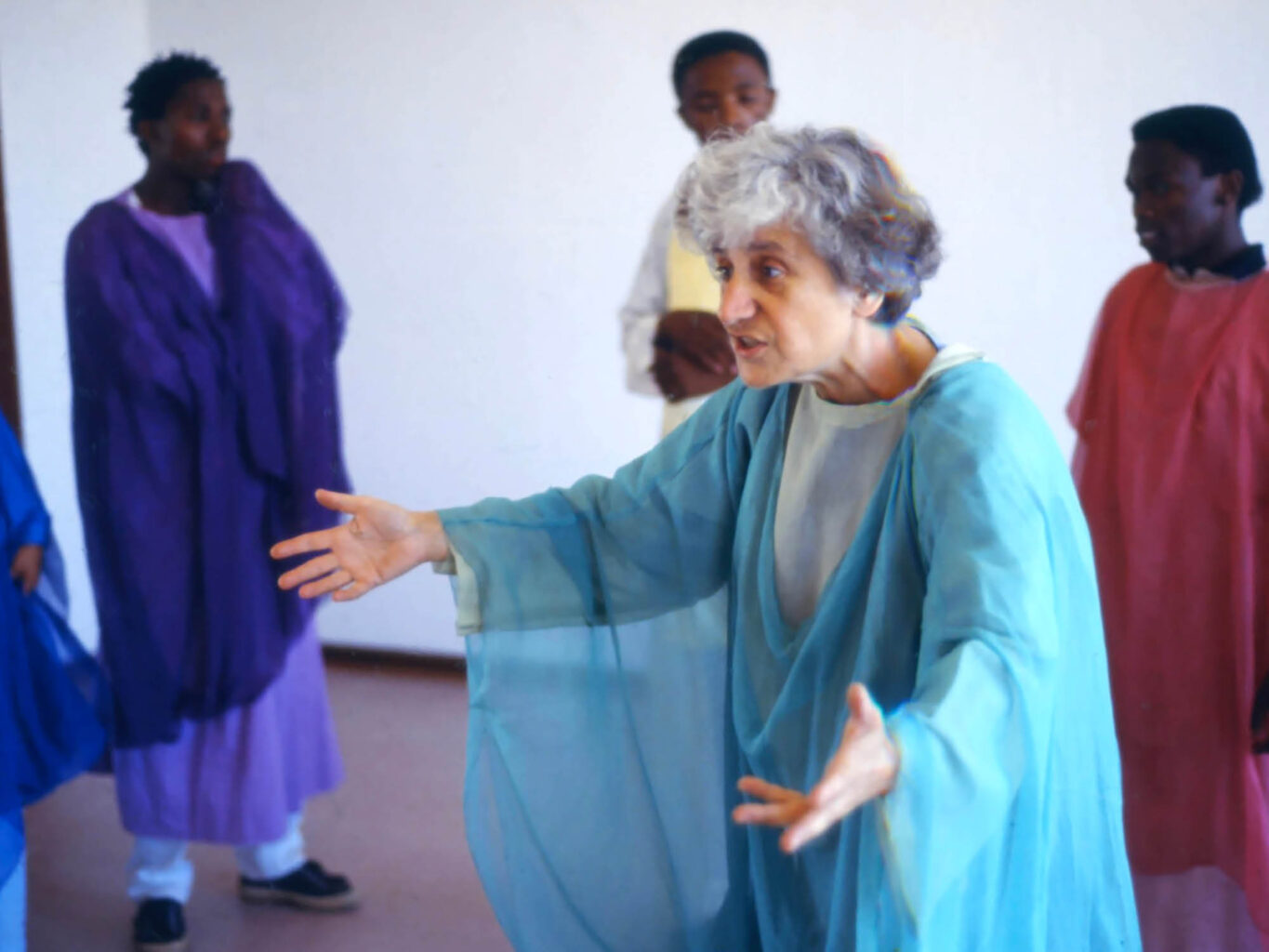
America
After my training, I worked for a while in a children’s home on Lake Constance. Through someone I met during that time, I visited America, got a house there, and eventually moved. At first, I worked in Chicago in a home for white children with behavioral problems. However, my house was in a black neighborhood [one where the majority of the people who live there are African American], so I only came home on weekends. Through the Esperanza School, I was able to apply for a green card [which allows you to be a permanent resident in the US], but that didn’t get me a work permit. While I was waiting to be able to work, I completely renovated the house I’d bought. I wanted a eurythmy room, which I built on the top floor. I had a wonderful little home with a big vegetable garden. All the neighbors were very friendly. When they saw what I was doing, they wanted to grow vegetables, too, and after I painted my whole house, they did the same with their own houses. That’s what happens when someone takes the initiative.
One day, I got a flat tire close to my house, which was right next to a gas station. I went to a black man I knew who worked there. He said he would help fix the tire and asked me to pump gas for him in the meantime. He was 36 years old and trying to go to school to learn proper English grammar and so on, but he was finding it very difficult. I gladly offered to help him. At that point, I did not know that he was the biggest drug dealer in Chicago and Detroit. He was employed by the police themselves at the gas station as a decoy for other people who wanted to buy drugs.
Eventually, he was locked up, so I started visiting him in prison. That’s when I realized how archaic the entire prison system was. I was able to observe firsthand how horrific life in a US prison is. We visitors were treated as if we had leprosy because we wanted to visit scum like him. He did not know what eurythmy was yet, but he told his fellow prisoners about me. They wanted to learn from me, so he asked me to speak to the director of the prison. I was given permission to go there once a month—a 14-hour journey by bus. It was a wonderful experience for me, working with a whole lot of murderers and rapists and hardened criminals, all men.
People always ask me if I was frightened. I can only say that I did not go there thinking there was anything to be scared of, but only with the idea that I might be able to contribute something. Most of them had never heard of poetry or tone. They had very poor educational backgrounds and weak self-images. Hardly anyone visited them. There are people who still have time in this world; it is not often that people have time, but for eurythmy, it is good to have a lot of time. We have to experiment and do something one way and then in a different way and again in another way. At the time, there were very few people who did anything like this in prisons, certainly not anything like eurythmy. Soon people realized that you can achieve something with eurythmy—the prisoners themselves told everyone that if they had had something like that in their youth, they would never have ended up in prison.
I got to know Dawud a little later.2 It was around the time my mother died. I inherited a little money from her that enabled me to work for a year for an organization that worked in the prison system. This gave me access to one of the largest prisons in the country, with 5,000 inmates. I guess you could say I was a kind of chaplain/counselor. That was the official title. One day, someone came to where I was working and said: ‘I’m not on your list. But I dreamed that I would meet someone today who would be very important in my life. I’m not even allowed to be here.’ That was Dawud. I asked him why he was here, in that case. ‘I believe,’ he said, ‘I’m here to serve God.’ Then he asked me what I was doing here, and I said that maybe I was here for the same reason.
That was our first meeting. Soon, I was having conversations with him that I could not have with anyone else in America, for example, about Viktor Frankl. He knew all about Viktor Frankl, who became a hero to him. I had always wanted to talk to people about his work, but no one had ever heard of him. But Dawud had read all of his works. He had had access to Frankl’s books in the prison he’d been in previously, where a rich businessman had bequeathed his entire library to the prisoners. He had read Shakespeare and other literature that he had never wanted to read during his school days. He showed me his drawings and many fantastic large pictures that he had painted. He had been able to sell some of them to earn some money in prison. He also played classical music on the guitar. No one else in the prison played anything like that; they all played only rock music. But he had been completely devoted to classical music since he was a little boy.” [Truus eventually married Dawud to give him a home and a person to relate to, because adjustment after release is difficult for long-term prisoners.]
How Truus and Claartje First Met
Claartje: “Truus’ family ran a children’s home in the Netherlands, but I had never met Truus herself because she was in America. A wealthy friend of mine and her husband emigrated to America and invited me to visit. After a week in San Francisco, we all went to an anthroposophical conference in Detroit. I followed them on a different flight, which was delayed. There was only one person at the airport to meet conference participants – I took one look at her and said to myself: ‘That’s my sister standing over here!’ I never had a sister in this life, but it happened to be Truus. All this was going through my mind before Truus had even seen me. During my stay in the United States, I met the Frankens,3 who invited me to South Africa. They wrote to me that they were looking for a eurythmist because the school urgently needed one. So Truus and I went to South Africa together. We were happy to have each other when we lived in Mooiplaats (the farm where Rosemary Hill School is located) because everyone else always went away for the weekend. But we weren’t happy at Max Stibbe School, so we moved to Johannesburg.”
Truus: “I was able to establish myself in Johannesburg after leaving the Max Stibbe School by doing therapeutic eurythmy to make a living. Although I had my work permit through Max Stibbe School, I needed to redo everything and start again from scratch. Since I had trained as a pharmacist, I was also able to work for Guy Wertheim-Aymes,4 mostly on weekends or during the holidays. Cindy Spencer had a large property in Rivonia, and when I moved in, she was keen to start activities there. A short time later, the first Christmas Rainbow Project came about. It put us into contact with people from Soweto who brought their children to the event. Twenty children took part, 17 of them black and three white. At that time, it was astonishing that the three white children were there at all.
Christine Howard was very active in the project and also arranged a general educational meeting where people from government schools came together with those from the Waldorf community. I met Carol Liknaitzki there,5 and we had ideas for founding a center for the art of living, which has always been my thing—Lebenskunst, the art of living. I carried certain images within me of an etheric stream flowing through the place where I lived—it felt almost as if I was expecting a baby. It was like a stream coming down from heaven through me to do what we had to do. We had to think long and hard about how we wanted to do it. We had connections to the ANC (African National Congress) through Pauline Scott,6 whose son was in the underground movement. This enabled us to get in touch with the people in Alexandra, which was, of course, much more accessible to us than the huge Soweto. However, it took half a year before people finally welcomed us to begin something.”7
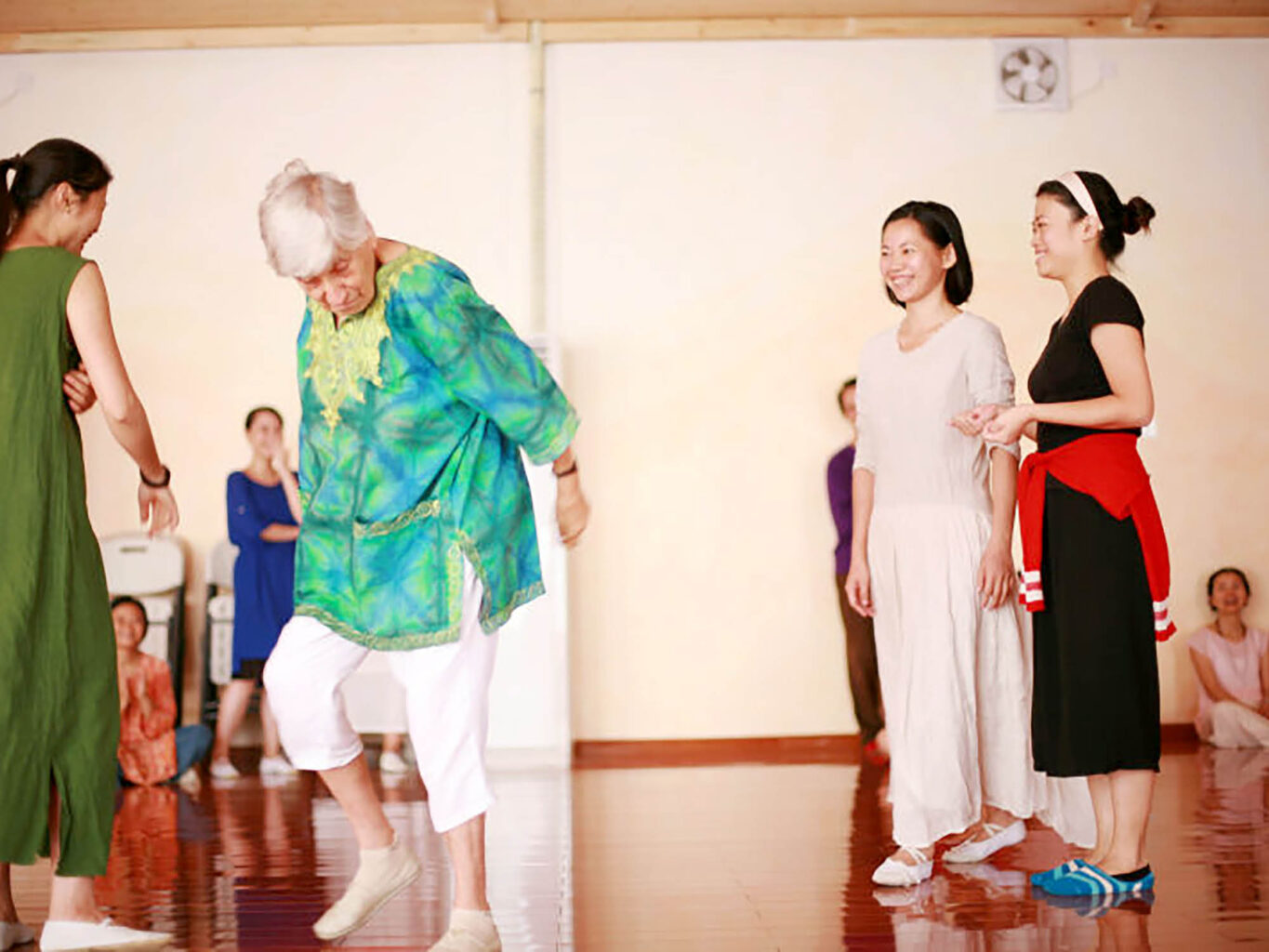
A Social World
Soon after Baobab College was founded in 1991, Truus went on a fundraising trip to Europe. She had cast her nets widely in advance, with plenty of speaking engagements at schools, anthroposophical branches, etc. By the time she returned to South Africa, she had completed a proposal for the construction of a teacher training facility and a new kindergarten, as well as a three-year training plan, to be funded by the Federal Ministry for Economic Cooperation and Development (BMZ). Thus, it became the first Waldorf project funded by the BMZ, as well as the recipient of the first community service worker sent by the Friends of Waldorf Education.8
In 1993, Truus returned to the USA for good but continued to work on financing the work in South Africa and founded the Centre for the Art of Living to help fund the projects. This work brought her into contact not only with donors on an international level but also with people who were involved in similar areas and projects. This was a time when everyone in the field of social work was rattled by the events around the World Economic Forum (WEF) meeting, which became notorious worldwide in 1999 as the “Battle of Seattle.” It was the first time that civil society, the private sector, made its presence felt, standing up against the unholy alliance between business and government.
Everyone in the social work field was deeply moved by these events. Who should control the process of globalization? And what should happen to the many victims of this process? As a counter-proposal to the World Economic Forum, the mobilization of civil society received its international identity just over a year later, in January 2001, at Porto Alegre in Brazil and became known as the World Social Forum. However, when Truus met Ute Craemer and Ben Cherry at the Goetheanum Teachers’ Conference in 2000, they realized that their kind of social work, which consisted of nothing but individual projects at a local level, would not find a suitable framework in the World Social Forum that was being proposed. It was equally clear that an international forum of exactly this type and organization was needed so that these initiatives could have a voice.

Back Home
Back in the US, Truus organized local social forums in which a whole group of people participated. However, her personal situation did not get any easier, and she often struggled to make ends meet. In 2016, at the age of 86, she told me: “I have now left the school where I also lived because a tutor was hired who told me: all the children in the grades are for me, and you can have the kindergarten children. They said I was not sufficiently qualified. Nowadays, they expect people to have a bachelor’s degree. I don’t have one. I only have five years of spiritual science. But somehow, you always manage.” Fortunately, she and Claartje were already enquiring about the conditions for returning to the Netherlands and applying for help from the social services there. So, a few years later, Truus actually moved back. In the meantime, she continued to work in several places, including China and set up a website for her eurythmic work, which she continued in the Netherlands, and remained active until the end.
In October 2020, not long after her return, her great friend and pillar of support, Claartje Wijnbergh, died. Truus was reconnected with her family and her niece Fiona, who was with her when she died in 2023, one day after receiving the final anointing of the Christian Community.
Books by Truus Geraets
Stars and Rainbows over Alexandra Centre for the Art of Living 1988
Inkanyesi – Entwicklungsarbeit und Waldorfpädagogik in Südafrika Verlag Freies Geistesleben Stuttgart 1993
Translated as: Courage and Love for Children in South Africa, Schaumberg Pubns 1993 ISBN 9780935690040
Love in Action: Perspectives of the Prison System in America from Both Sides of the Walls Trafford Publishing April 2010 ISBN 978-1426926686
The Healing Art of Eurythmy 2005
Music that Moves Me
Translation Laura Liska
All images Truus Geraets
Footnotes
- The Camphill Christopherus in Amerpoort.
- For details, see her book, Love in Action, Trafford Publishing, 2010.
- Annelie and Huibert Franken, co-founders of the Max Stibbe School outside Pretoria, which is now called the Waldorf School on Rosemary Hill.
- Director of Pharma Natura, the representative of Weleda and Wala at that time.
- Carol Liknaitzki directed early childhood education at the college and, along with her husband, David, served on the board of the Centre for the Art of Living.
- Pauline Scott has been a member of the Anthroposophical Society in Johannesburg since the early 1960s. Her son, Simon Radcliffe, was involved in the founding of black trade unions. This led to his imprisonment for several years for treason. During this time, his mother became an activist with the Detainee’s Parents Support Committee.
- Truus has told the story of the Waldorf projects in Alexandra and Soweto, Madietane and Winterton, as well as numerous kindergartens in her two books Stars and Rainbows over Alexandra and Inkanyesi, as well as in my own more historical report, Integrating South Africa’s Waldorf Schools.
- See Friends of Waldorf Education.

